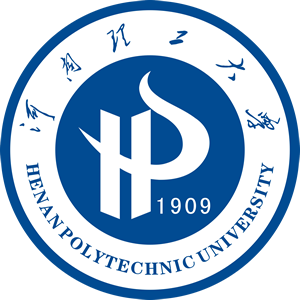| 供稿: 郑德顺;祁帅帅;杨文涛;王艳鹏;李雨 | 时间: 2020-03-10 | 次数: |
郑德顺, 祁帅帅, 杨文涛,等.豫西宜阳地区上二叠统孙家沟组上段钙质结核成因及其对古气候的指示意义[J].河南理工大学学报(自然科学版),2020,39(2):22-31.
ZHENG D S, QI S S, YANG W T, et al.The Origin of calcareous concretions in the upper part of the Sunjiagou formation ofUpper Permian in Yiyang area,western Henan province and its indicatingsignificance to paleoclimate[J].Journal of Henan Polytechnic University(Natural Science) ,2020,39(2):22-31.
豫西宜阳地区上二叠统孙家沟组上段钙质结核成因及其对古气候的指示意义
郑德顺, 祁帅帅, 杨文涛, 王艳鹏, 李雨
河南理工大学 资源环境学院,河南焦作454000
摘要:钙质结核作为沉积地层中重要记录之一,蕴含着丰富的古气候信息。本文选取豫西宜阳地区上二叠统孙家沟组上段的钙质结核为研究对象,运用岩石学与地球化学等方法对钙质结核的特征及成因进行研究并恢复该时期的古气候。结果表明:(1 )孙家沟组上段的钙质结核根据不同的岩石学特征可分为 Ⅰ类和 II 类。I类为分布在该段底部和顶部紫红色、灰黄色团块状和姜结状结核,其成因主要是成岩作用过程中CaCOs饱和沉淀、溶蚀交代形成;II 类以位于该段中上部土黄色椭球状结核为主,与围岩层有明显的界线,具有同心纹理,为碳酸盐在饱和后不断析出受胶结作用影响凝结成核,并使结核由内向外不断生长。(2)II类结核的碳、氧 同位素、古盐度“ Z值”“ S值”的变化特征表明上段地层为封闭型的半咸水-咸水湖泊沉积,其古气候特征主要以炎热干旱-半干旱为主。(3)宜阳地区孙家沟组上段钙质结核的大量出现,预示着晚二叠世的古气候由温湿型向干热型转变。本次研究结果对揭示二叠纪末期陆相古气候的变化具有重要的意义。
关键词:晚二叠世;孙家沟组;钙质结核;古气候;豫西宜阳地区
doi:10.16186/j.cnki.1673-9787.2020.2.4
基金项目:国家自然科学基金资助项目(41702106)
收稿日期:2019/06/15
修回日期:2019/08/02
出版日期:2020/03/15
The Origin of calcareous concretions in the upper part of the Sunjiagou formation ofUpper Permian in Yiyang area,western Henan province and its indicatingsignificance to paleoclimate
ZHENG Deshun, QI Shuaishuai, YANG Wentao, WANG Yanpeng, LI Yu
Institute of Resources and Environment, Henan Polytechnic University ,Jiaozuo 454000 , Henan, China
Abstract:As one of the important records in the sedimentary strata, calcareous concretions contain abundant paleoclimate informations. In this paper, the calcareous concretions in the upper part of the upper Permian Sunjiagou formation in the Yiyang area of western Henan were selected as the research object, and their characteristics and causes were studied by petrology and geochemistry to recover the coeval paleoclimate. The results showed that : (1 ) Calcareous concretions in the upper member of the Sunjiagou formation could be divided into two types according to different petrological characteristics. The type I concretions distributed at the bottom and top were mainly purplish red, grayish yellow mass and ginger knot. The origin of type I concretions were formed by CaCO§ saturated precipitation, dissolution and metasomatism during the late diagenesis. The type II concretions were mainly khaki ellipsoid, which had concentric texture and obvious boundary with surrounding strata in the middle and upper parts. The origin of type I concretions were due to the continuous precipitation of carbonate after saturation and affection by cementation nucleation, which continuously grew from core to outside. (2) The variable characteristics of carbon and oxygen isotopes, paleosalinity “ Z value" ," S value“ of the type I concretions indicated that the upper strata was closed brackish water-saltwater lacustrine deposits. The paleoclimate features were mainly hot-arid and semi-arid. ( 3 ) The occurrence of calcareous concretions in the upper member of the Sunjiagou formation from the Yiyang area indicated that the paleoclimate changed from warm and humid to hot and arid during the late Permian. This study was of important significance to reveal the change of terrestrial paleoclimate at the end of the Permian.
Key words:Late Permian;Sunjiagou Formation;calcareous concretion;paleoclimate;Yiyang areawestern

